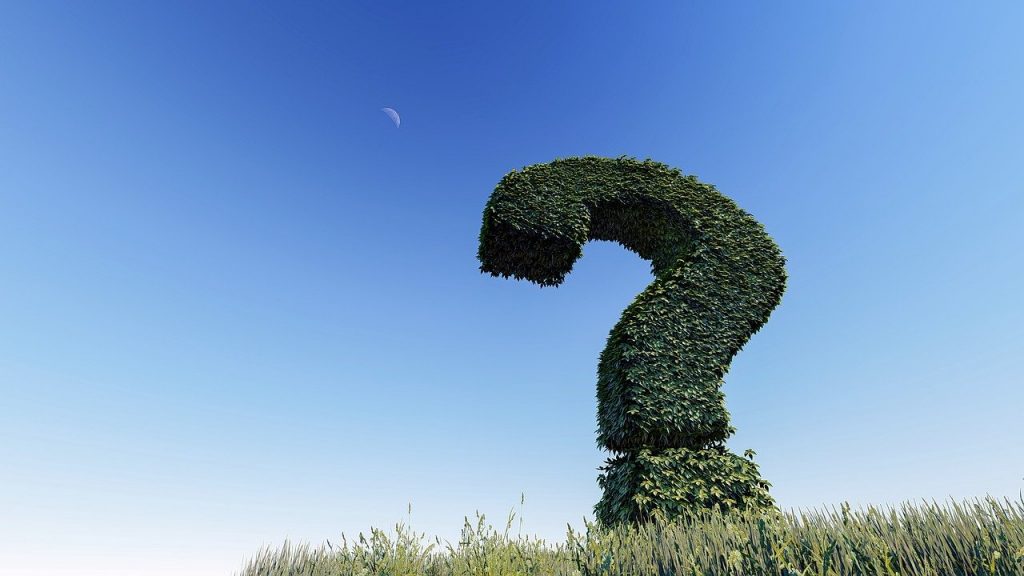
If you’re trying to achieve the perfect lawn, you may have heard that you need to start at the bottom. That’s right, we mean dirt! You may not realize that questions about soil quality are actually a great starting point.
While mowing, feeding, and watering your lawn are all important steps, it really starts with soil. If you want a beautiful lawn, you need to take care of your soil. But like many homeowners, you may not know much about soil or soil quality. To help you out, we’ve compiled a list of the top 5 questions about soil quality that you should be asking.
What Kind of Soil Do I Have?
The first step to getting your soil in great shape is to identify it. Most yards have either sandy or clay soil. The best way to tell what type of soil you have is by touching it and rolling it in your hands.
Sandy soil has a gritty element – you can feel sand grains within it, and it falls through your fingers. Meanwhile, clay soil has a smearing quality and is sticky when wet.
Although scientists use many methods to classify soil, gardeners usually describe soil using words like “sandy,” “clay,” and “loam.” These terms describe the soil’s texture. Knowing your soil’s texture will help you predict how it will behave under different conditions. It’s the first step toward creating the best conditions for the plants you’re growing.
There are several ways you can test your soil at home to identify the type. As we mentioned, touching it is the first step. You can also try the Mudshake Method.
Is My Soil Alkaline or Acidic?
The pH level of soil is an important indicator of quality. That’s why one of the first questions about soil quality should be whether your soil is alkaline or acidic. The correct balance is where the soil pH is between 5.5 and 7.5, so every effort should be taken to check soil pH levels regularly. Early identification of soil pH problems is important as it can be both costly and difficult to correct long-term nutrient deficiencies.
Alkaline soil is referred to by some gardeners as “sweet soil.” The pH level of alkaline soil is above 7, and it usually contains a great deal of sodium, calcium, and magnesium. Since alkaline soil is less soluble than acidic or neutral soil, the availability of nutrients is often limited.
Three basic things cause acidic soil. The first, and most common, is that the organic matter and minerals that break down in the soil over time are acidic in nature, and make the soil acidic. The second way soil becomes acidic is via leaching due to excessive rainfall or irrigation. Another way soil becomes acidic is from the use of high-nitrogen synthetic fertilizers. These fertilizers are usually ammonia-based, which increases soil acidity.
How Do I Test My Soil?
It is possible to test soil pH by taking a soil sample and sending it away to a lab for analysis, or by using a pricey test kit you purchase. However, a simple DIY test will give you immediate results and is easy to assemble and use. The whole process will take just 15 minutes or less. The results aren’t as precise as a laboratory test, but it will give you a general idea if your soil is acidic or alkaline. An extreme reaction in either direction tells you that you may need to amend your soil to bring it into an ideal pH range for the lawn you want to grow.
The Pantry pH Test for Soil Acidity or Alkalinity
This simple test uses items you likely already have in your pantry. First, place 2 tablespoons of soil in a bowl and add half a cup of vinegar. If the mixture fizzes, you have alkaline soil. Next, take a clean bowl and place 2 tablespoons of fresh soil in it. Moisten the soil with distilled water and add half a cup of baking soda. If the mixture fizzes, you have acidic soil.
How Do I Treat My Soil?
If your soil is alkaline, you can lower your soil’s pH or make it more acidic by using several products. These include sphagnum peat, elemental sulfur, aluminum sulfate, iron sulfate, acidifying nitrogen, and organic mulches. Soil acidity can be corrected easily by liming the soil or adding basic materials to neutralize the acid present.
Remember, you will also be fertilizing your lawn in the spring and fall. Thus, it’s helpful to test your soil once per season to make sure it remains balanced. Don’t worry about extreme treatment measures like adding earthworms to your soil. While earthworms can benefit vegetable beds and compost piles, they can seriously damage natural ecosystems. Best to leave nature to its own devices on this one!
How Do I Keep My Soil Healthy?
There are several steps to keeping your soil healthy. When it comes to questions about soil quality, how to keep it healthy may be the most valuable. Keeping your soil healthy involves food, water, air, and protection.
Just like your lawn will need watering and feeding, so will your soil. A healthy soil ecosystem provides your grass with easy access to air, water, and nutrients.
Water
Boost your soil’s water retention by adding organic matter. All soil types will benefit from generous applications of well-rotted organic matter. In fact, it can dramatically improve the soil’s ability to retain moisture. Additionally, moisture in the soil means more water for your lawn’s roots to soak up, especially during hot, dry summer months. Thus, a greener, healthier lawn all year.
Nutrients
To increase nutrients in your soil, you can use what’s known as a soil amendment or soil conditioner. This is a product that is added to soil to improve its fertility and even its fluids and particles. Not only can most soils be improved, they usually need to be improved to get the maximum results – like a nice, lush lawn.
Along with natural fertilizers like grass clippings and other organic compost, you can add manure to your soil for nitrogen. All livestock manures can be valuable additions to soil as their nutrients are readily available to soil organisms and plants. In fact, manures make a greater contribution to soil aggregation than composts, which have already mostly decomposed.
One other type of soil amendment would be one that improves water retention, like shredded bark or peat moss.
Air
Soil compaction and disturbance such as excessive tillage can eliminate these important microenvironments. This makes it hard for plant roots to penetrate the soil, absorb water and nutrients, and interact with beneficial microbes.
Disturbing soil also disturbs weed seeds, exposing them to light and increasing germination—in other words, more weeds!
To minimize compaction and provide an optimal growing environment, use designated walking paths or stones through your lawn to avoid compacting soil around grassroots.
Knowing Which Questions About Soil Quality to Ask
When it comes to your lawn health, you can never ask too many questions. Now that you know which questions to ask to get your soil in great shape, you should be ready for the next big step: installing sod. The pros at The Turfgrass Group can help you choose the best turf variety for your property and climate. Reach out today to get started on the lawn of your dreams!who want a healthy green lawn year-round without spending time and money watering every day. Reach out to The Turfgrass Group today to find a grower in your area!
